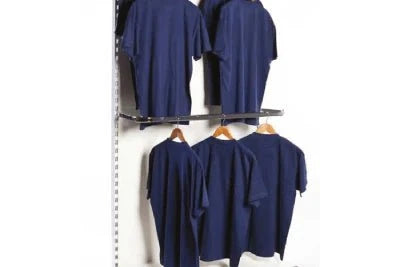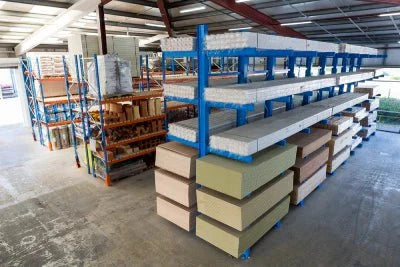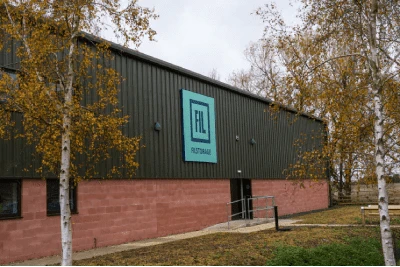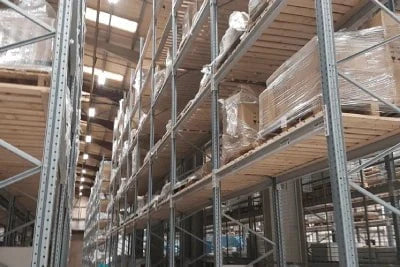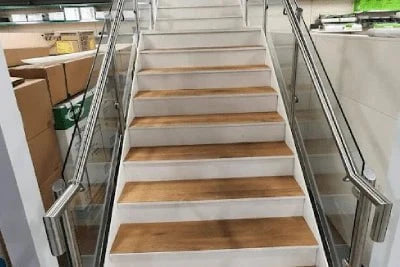
Attracting the retail trade – how timber merchants are embracing the science of retail
As featured on page 63 of the July/August 2025 Edition of Timber Trade Journal Magazine.
With the heaviest lengths of timber generally stored outside, many merchants spend time and money ensuring racking solutions in the yard are arranged with efficiency in mind.
But all too often, the same approach isn’t applied to the warehouse. In the worst cases space is cluttered, not used effectively, and poorly organised.
But according to Mike Gorman, Sales Director of Yorkshire-based storage specialists Filstorage, this approach is changing.
With many timber merchants embracing modern, efficient storage practices and other lessons learned from builders’ merchants and the DIY multiples, indoor spaces are beginning to feature far more often in decision making.
Mike said: “We’ve been working in the merchant sector for more than 30 years now, and we’ve seen a lot of changes over that time.
“Supermarkets and DIY retail stores where the first to start taking retailing seriously many years ago, and over the past decade, builders’ merchants have followed suite, learning a lot of lessons from the science of retailing.
“Timber merchants have been slower to embrace more up-to-date practices, preferring instead a traditional approach that is trade-friendly, but can be less so to retail customers.
“But recently, this is beginning to change. More and more, we’re getting asked by timber merchants to design warehouse layouts and storage solutions that make the most of the space available and offer efficient materials handling, to help the business offer a more customer-friendly environment.”
Mike added many of the changes are a direct result of COVID, which saw a boom in people tackling home improvements.
This drove an increase in demand for timber from the general public he said, and an increase in retail customers going straight to timber merchants.
“COVID changed a lot in the home improvements and materials sectors,” Mike said.
“People were stuck at home, often with little to do, so turned to DIY. But price was an issue too as it was a very uncertain time, so many people forsook the big DIY chains for merchants, believing – often correctly – they would get a better deal.
“This opened up the eyes of the public to timber merchants and many have continued to use them.”
One business that has recognised the need to optimise storage and floor space is Chelmsford-based Chandler Material Supplies.
Last year, the company bought out timber merchant Essex Timber & Plywood due to the owner retiring and immediately set about modernising the warehouse.
Aaron Gosling, a director of Essex Timber & Plywood before the buyout, was retained to run the depot and oversaw the work, which was carried out by Filstorage.
He said: “When Chandler bought it, they wanted to make more room in the warehouse because the space wasn’t being fully used.
“The centre piece of this is a huge pigeonhole racking system with 80 racks, which is topped with a mezzanine floor.

“Its completely revolutionised the warehouse. It’s condensed so much space into one area. The amount of stuff you can fit in that one racking system is unbelievable.”
The pigeonhole racking is used to store long lengths of MDF skirting safely and efficiency, and the mezzanine floor, which has added around a third more floor space, is used to store outdoor drainage parts.
Aaron added he could not think of a better solution than the combination of the racking with the floor.
“It’s so efficient,” he said.
“Before this, we must have been using around half the space available.
“With this in place, the warehouse not only has more capacity, it is also much more user-friendly. And as materials can be stored more orderly, it is safer for customers and staff too, which is always our top priority.”
Mike Gorman added that the addition of a mezzanine floor even without the racking solution was growing in popularity among timber merchants.
This, again, he says, has filtered down from the home improvements and builders’ merchant sectors.
He said: “Mezzanines are among our best sellers because they are so effective.
“When merchants get to what they think is capacity, conversations about moving often start to surface. But builders’ merchants learned long ago that expansion is often about looking up. If the building is high enough, a mezzanine is a far more cost-effective and less disruptive way to expand.
“Builders’ merchants have been approaching branch planning like this for years and timber merchants are now learning that lesson.
“Going forward, I think we’re going to see a lot of changes in the timber merchant sector as they look to increase their market share of retail customers and embrace the science of retailing. It’s going to be a very interesting time.”


